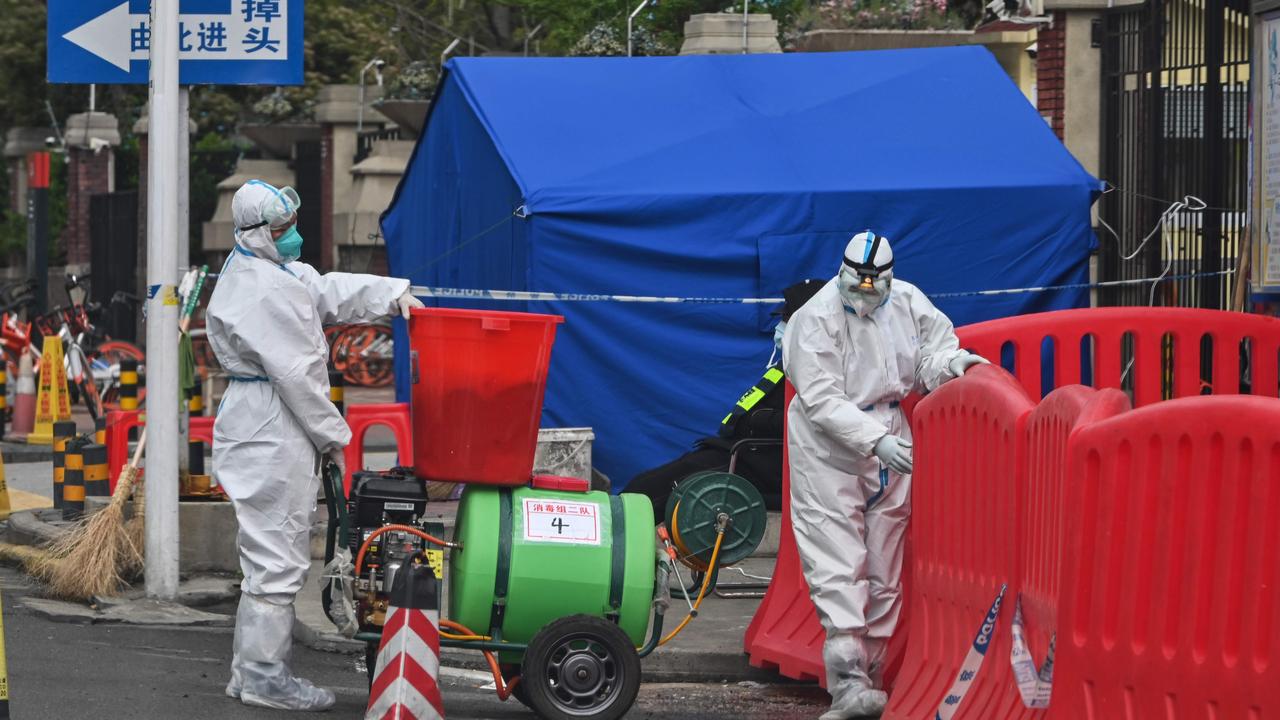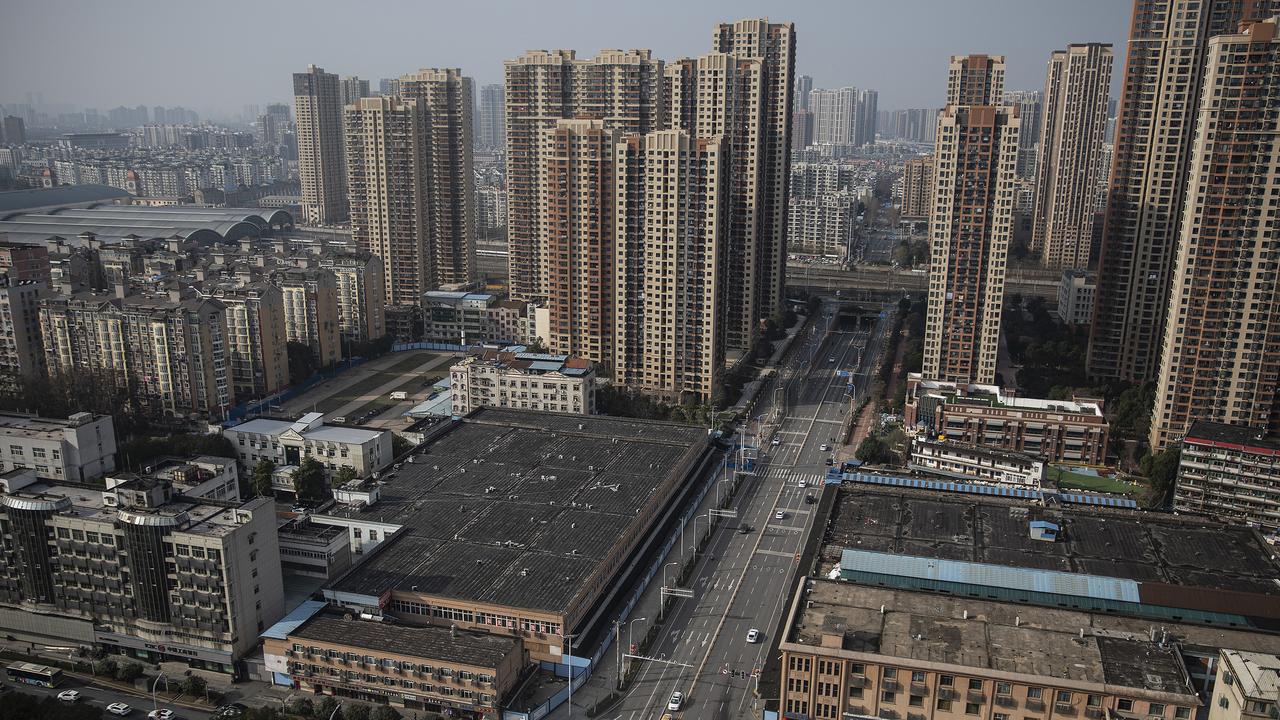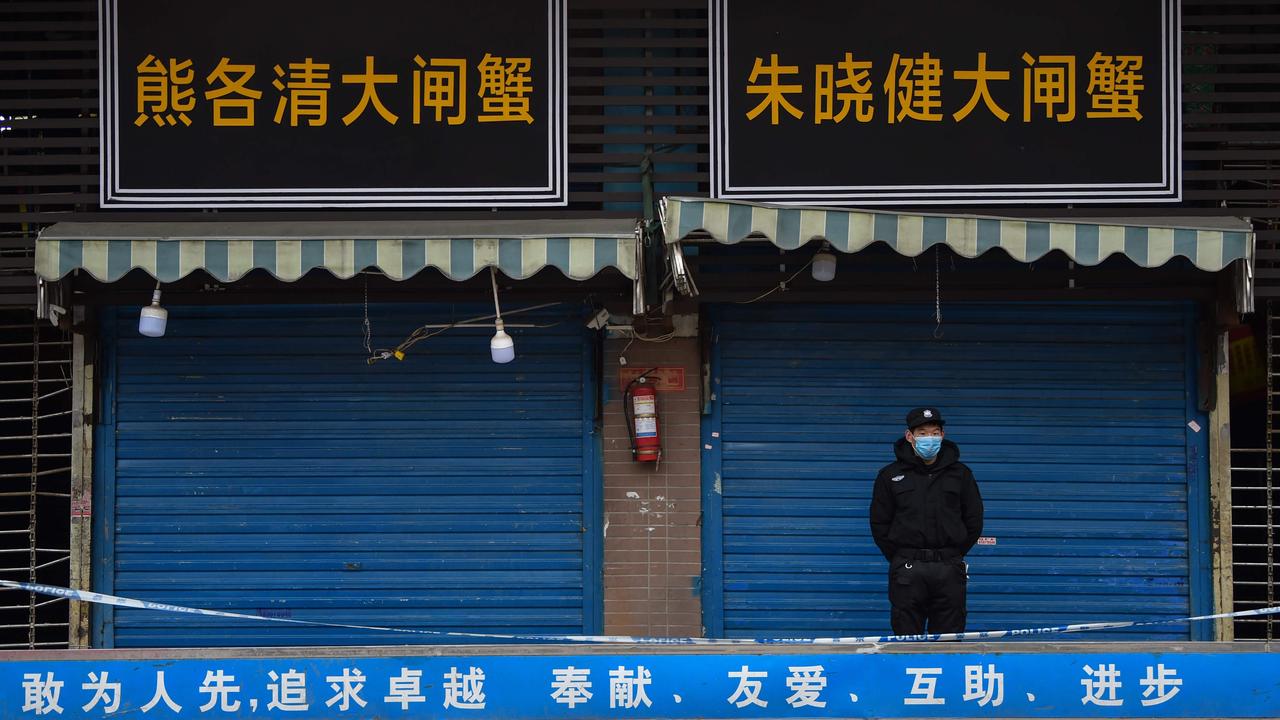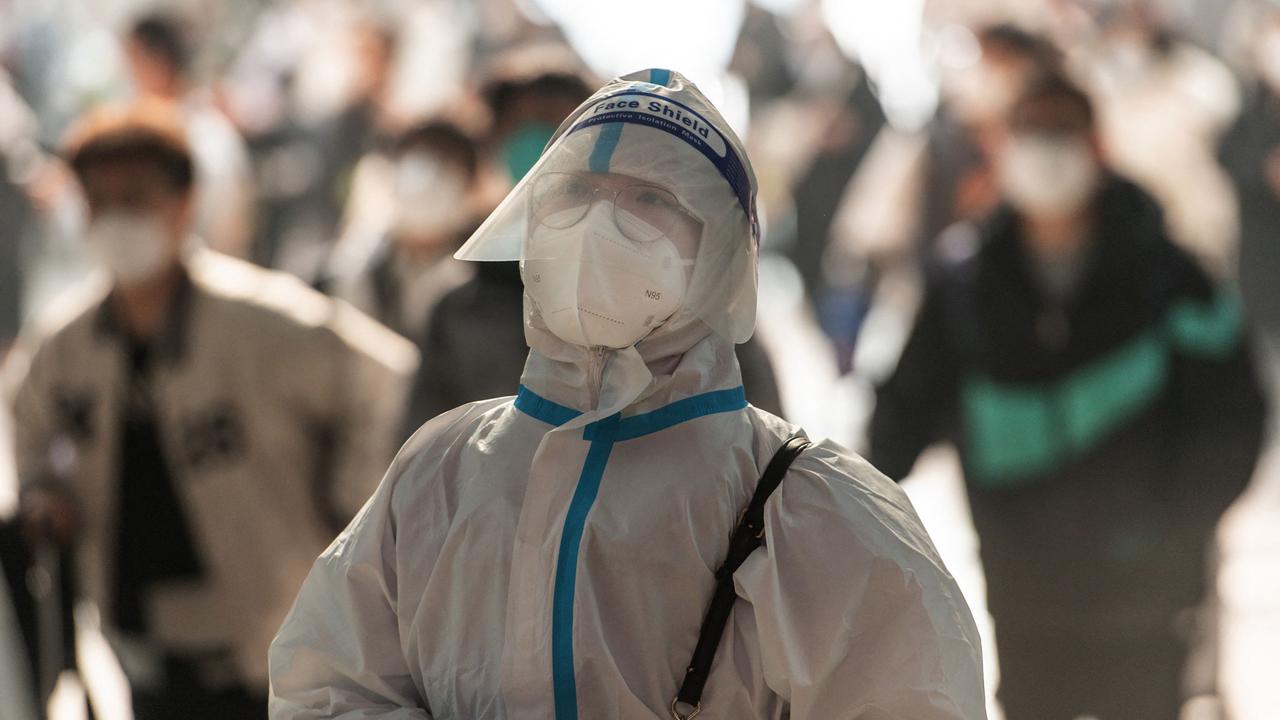Explosive claims China deleted early Wuhan covid data
An explosive report claims authorities covered up key information from early in the Wuhan epidemic, hindering WHO’s investigation into the pandemic.
Explosive new claims have emerged that China deleted a data set containing covid sequences from early in the Wuhan epidemic that could provide vital clues in the search for the ‘Patient Zero’ that sparked a worldwide pandemic.
The scientific investigation also suggests that the virus was circulating in Wuhan before it was detected in the local wet markets.
It suggests the early covid viruses investigated by the World Health Organisation are not fully representative of the virus strains circulating in those early months. The virus has now killed nearly four million people.
Professor Jesse Bloom, an associate professor at the Seattle-based Fred Hutch Cancer Research Center, released the new research on Wednesday.
It reveals a data set containing SARS-CoV-2 sequences from early in the Wuhan epidemic has been deleted from the National Institute of Health‘s Sequence Read Archive.
RELATED: Chinese spy defects ‘offering covid speaks’

The research paper, Recovery of deleted deep sequencing data sheds more light on the early Wuhan SARS-CoV-2 epidemic, had identified a data set containing SARS-CoV-2 sequences from early in the Wuhan epidemic that has been deleted from the NIH’s Sequence Read Archive.
“I recover the deleted files from the Google Cloud, and reconstruct partial sequences of 13 early epidemic viruses,” Prof Boom writes in the abstract of the report.
And he finds there is no plausible reason for the missing files that were deleted and the most likely explanation is that China deleted the material to “obscure their existence”.
RELATED: Wuhan Institute of Virology short-listed for ‘outstanding’ prize

“The fact that such an informative data set was deleted has implications beyond those gleaned directly from the recovered sequences. Samples from early outpatients in Wuhan are a gold mine for anyone seeking to understand the spread of the virus,” he writes.
“Even my analysis of the partial sequences is revealing, and it clearly would have been more scientifically informative to fully sequence the samples rather than surreptitiously delete the partial sequences. There is no plausible scientific reason for the deletion: the sequences are perfectly concordant with the samples described in Wang et al. It therefore seems likely the sequences were deleted to obscure their existence.”
RELATED: Covid lab leak evidence ‘overwhelming’
The virologist is a major player in the debate over the origins of covid and co-signed an influential letter in May from scientists calling for greater scientific investigation into the origins of the virus.
His research suggests that the Huanan Seafood Market sequences that are the focus of the joint WHO-China report are not fully representative of the viruses in Wuhan early in the epidemic.
Instead, the progenitor of known SARS-CoV-2 sequences likely contained three mutations relative to the market viruses that made it more similar to SARS-CoV-2’s bat coronavirus relatives.
“Understanding the spread of SARS-CoV-2 in Wuhan is crucial to tracing the origins of the virus, including identifying events that led to infection of patient zero,‘ Prof Bloom writes.
“The first reports outside of China at the end of December 2019 emphasized the role of the Huanan Seafood Market (ProMED 2019), which was initially suggested as a site of zoonosis.
“However, this theory became increasingly tenuous as it was learned that many early cases had no connection to the market.
“Eventually, Chinese CDC Director Gao Fu dismissed the theory, stating “At first, we assumed the seafood market might have the virus, but now the market is more like a victim. The novel coronavirus had existed long before”.
Prof Bloom notes that there were reports of cases that far preceded the outbreak at the Huanan Seafood Market and the respected medical journal The Lancet described a confirmed case having no association with the market whose symptoms began on December 1, 2019.
RELATED: Live bats kept in cages at Wuhan Institute of Virology

The South China Morning Post also described nine cases from November 2019 including details on patient age and sex, noting that none were confirmed to be “patient zero”
Despite this, the WHO-China report dismissed all reported cases prior to December 8 as not COVID-19, and revived the theory that the virus might have originated at the Huanan Seafood Market.
Prof Bloom recovered the deleted files from the Google Cloud and reconstructed partial sequences of 13 early epidemic viruses.
But the recovered data also contains a fresh mystery. The virus data that Prof Bloom recovered was not what the scientist expected.
“Now I need to give background to explain a confusing scientific mystery about other early #SARSCoV2 sequences. Although events that led to emergence of #SARSCoV2 in Wuhan are unclear (zoonosis vs lab accident), everyone agrees deep ancestors are coronaviruses from bats,‘’ he said.

“Therefore, we’d expect the first #SARSCoV2 sequences would be more similar to bat coronaviruses, and as #SARSCoV2 continued to evolve it would become more divergent from these ancestors. But that is *not* the case!
“Instead, early Huanan Seafood Market #SARSCoV2 viruses are more different from bat coronaviruses than #SARSCoV2 viruses collected later in China and even other countries.”
Prof Bloom writes there are a couple of scenarios that may explain this outcome.
“How do deleted sequences I recovered relate to this conundrum? If we include those sequences, and note 4 sequences from Guangdong are from two groups of people infected in Wuhan in late Dec / early Jan, we get plausible scenarios that resolve above problems,” he said.
“These two scenarios are plotted below. Each has a different ‘progenitor’, which is the sequence that gave rise to all *currently* known #SARSCoV2 sequences (still may not be virus that infected patient zero if other early sequences remain unknown).
“Both putative progenitors have 3 mutations relative to Seafood Market viruses that make them more similar to bat coronavirus.
“Both progenitors suggest #SARSCoV2 was circulating in Wuhan before December outbreak at Huanan Seafood Market, which is corroborated by lots of other evidence, including news articles from China in early 2020.
“Sequence sharing could be further limited by fact that scientists in China are under an order from the State Council requiring central approval of all publications
“Second major implication is that it may be possible to obtain additional information about early spread of #SARSCoV2 in Wuhan even if efforts for more on-the-ground investigations are stymied.
“Scientific communication and data sharing typically rely on trust. The NIH Sequence Read Archive has >13,000,000 runs, so they have to trust authors when they request deletions as not feasible to validate reasons for all requests, some of which are legitimate.
Professor Bloom also said his research suggested scientists could continue their investigations regardless of whether further “official” injuries are called.
“It is important to examine if other trust-based systems in science conceivably may have also been used to hide data relevant to origins / early spread of #SARSCoV2. This includes not only looking more at sequence databases, but also paper reviews, grant reporting, etc,‘’ he writes.
“There are also broader implications. First, the fact this dataset was deleted should make us skeptical that all other relevant early Wuhan sequences have been shared. We already know many labs in China ordered to destroy early samples:
“Third major implication is that scientists need to stay focused on data-driven study of #SARSCoV2 origins / early spread. After spending the last 4 months studying this closely, I am cautiously optimistic that additional relevant data are still likely to come to light.




